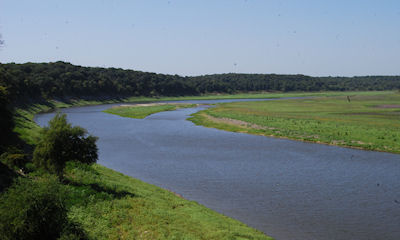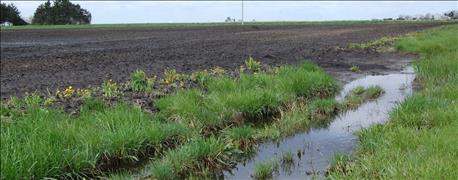January 21, 2016


Program focused on slowing farm nutrient runoff hits 1 million acres in Great Lakes
Agriculture retailers and independent crop advisors are showing scores of farmers a new way of growing crops that reduces excessive nutrient runoff into nearby drinking water supplies. The Nutrient Steward Council’s voluntary 4R Nutrient Stewardship Certification Program (4R), not quite in its second year, has reached thousands of growers and now affects more than a million acres across the Western Lake Erie watershed. The overall goal of the program is to provide education to agriculture professionals about how to use the right source of nutrients at the right rate, right time and the right place, a concept developed by the International Plant Nutrition Institute, Fertilizer Canada and The Fertilizer Institute.
More susceptible than the other Great Lakes to the effects of wastewater treatment issues and farm nutrient runoff due to its shallower and warmer waters, Erie has become a focal point of Great Lakes protection agencies since a particularly severe algae bloom in 2014 left some 500,000 people without drinking water for several days.
The Nutrient Stewardship Council recently announced that the 4R Certification Program had reached the important 1 million acre benchmark in its efforts to slow harmful excess runoff into lake waters and soil. This means that the 4R Nutrient Stewardship Certification Program, created to encourage ag retailers, vendors, advisors, farmers and other professionals to consider the impact of fertilizer on freshwater, is gaining traction.
“The one million acre milestone is significant because it represents a change in attitudes throughout the Great Lakes basin,” says Carrie Vollmer-Sanders, council chairwoman and The Nature Conservancy’s Western Lake Erie project director. “It’s about 20% of the watershed. Social scientists call 20% the ‘tipping point’ at which change is embraced – it’s no longer just the innovators becoming 4R certified; it’s becoming the status quo.”
Since the program’s inception in March 2014, 25 nutrient service providers have become certified, (meet some of the certified growers here), which represent 3,945 grower customers covering 1.6 million acres in Ohio and Michigan. Another 45 commitments are pending.
But 4R Certification is rigorous. Some 41 benchmarks must be reached over three years including the creation of digital field boundary maps that identify sensitive features, soil tests and yield maps as well as the provision of on-farm data showing improvement of crop yield without increased risk to water quality.
~~~PAGE_BREAK_HERE~~~
Mark Sunderman is the President and CEO of Legacy Farms Cooperative in northwest Ohio and notes that all 280,000 acres of farmland serviced by his organization drain into the western Lake Erie basin.
“We’ve been on board with the 4R Certification process since its pilot phase the year before it was launched,” Sunderman says. “We apply fertilizer to more than 70% of our total service area – we couldn’t afford not to look at how to modify our techniques.”
Sunderman adds that all five of his agronomy locations are now 4R Certified and his organization has long been focused on precision agriculture and state-of-the-art technology that aid in minimizing product waste or overuse.
“Farmers are invested in both conservation as well as maximizing crop yield,” he says. “The key for them is knowing which practices are best for keeping those nutrients growing crops and out of the water. Certification through the 4R program demonstrates that we’re using best management practices so that customers and the community can be confident that Legacy is looking out for their best interest.”
“Becoming certified does require commitment, but the program targets retailers who can make changes on a large scale that will create sustainable modifications for farmers who utilize these retailers for fertilizer application,” Vollmer-Sanders agrees. “The Council now sees the emerging evidence that it is possible to use science to create partnerships that benefit both people and nature. Algae blooms like the 2014 bloom in Lake Erie are a health hazard to people and also endanger the economy by putting critical habitats for a number of fish and other wildlife species at risk.”
Though the program’s progress will not have tangible numbers for several years, Vollmer-Sanders notes that there has been increased interest and support in protecting the lake since the 2014 algae bloom near Toledo, including $3.1M US EPA dollars to reduce algae in Ohio and Michigan water supplies; state and federal policy changes that require more aggressive tracking and monitoring of nutrient practices; and an agreement made last summer by Ohio, Michigan and Ontario leadership to reduce phosphorus by 40% by 2025. And unlike Ohio’s Senate Bill 1, the 4R program goes beyond individual grower education, connecting with nutrient service providers – those who advise, sell and physically apply nutrients for crop clients. Next month, 4R leadership and certified vendor representatives will meet in Ft. Wayne, Ind. to discuss advancing the program.
“This program’s success has been exciting for those in the Lake Erie watershed, but it’s a significant step in creating a template to use across states to generate an impact across the larger Great Lakes basin—and maybe even beyond,” says Andrew Allman of OABA. “This program's success has been exciting for those in the Lake Erie watershed. The Nutrient Stewardship Council hopes to see an even greater participation in 2016 as we are hoping our upcoming workshop will inform nutrient service providers about the voluntary certification program and the importance of the 4Rs in nutrient management.”
The Nutrient Stewardship Council will host a complimentary "4R Farming 4 Sustainability" educational workshop on the 4Rs and the 4R Nutrient Stewardship Certification Program on Feb. 12 at the Holiday Inn Fort Wayne, Indiana - IPFW Coliseum. For more information on the event, please visit http://www.oaba.net/events, email [email protected] or call 614-326-7520.
You May Also Like




